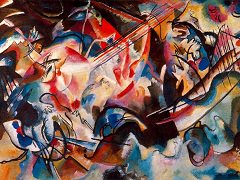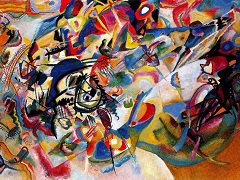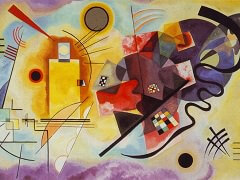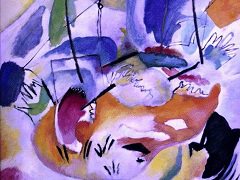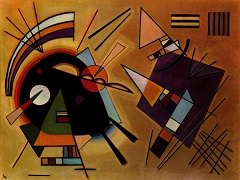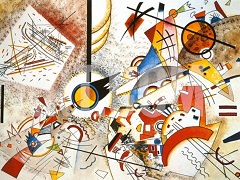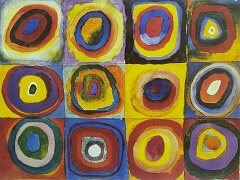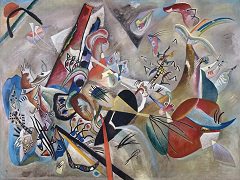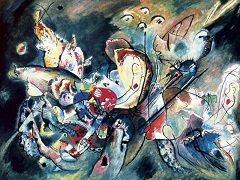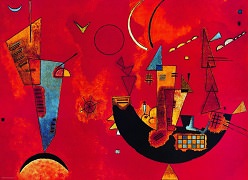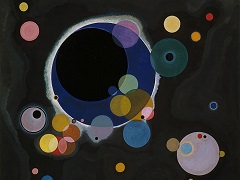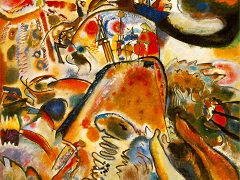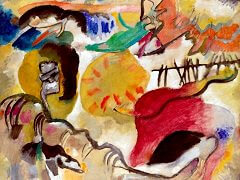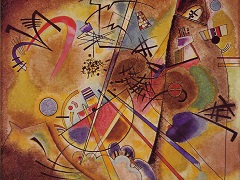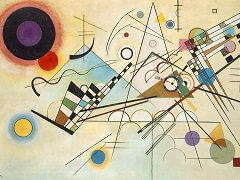Multicolored Circle, 1921 by Wassily Kandinsky
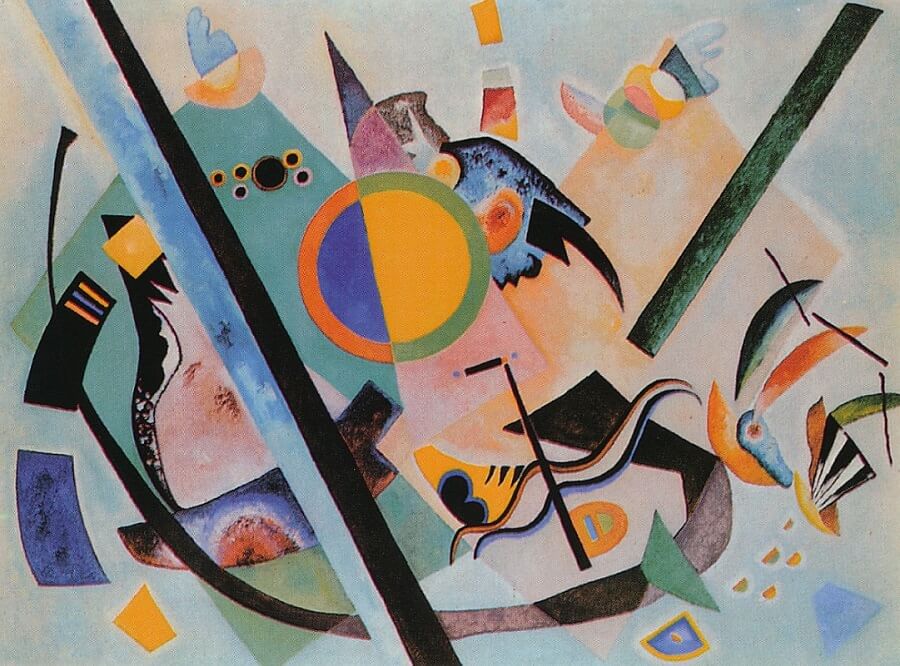
After the end of War I, independently of each other, painters like Picasso, Piet Mondrian, Joan Miro and many others, including Kandinsky and Paul Klee, went through a quiescent period after the tornado of passionate inquiries and explosive emotions of their cubist or expressionistic periods. About 1920, the art of Picasso entered a phase of neo-classicistic coolness which, in its lucidity and compositional transparency, can also be traced in a painting like Kandinsky's Multicolored Circle. But while Picasso's new style had a retrospective quality, Kandinsky's painting signaled the conquering of new formal values.
Grohmann was right in stating that Multicolored Circle represents "the dream of a world in which neither psychological nor mechanical laws appear to be valid," for, beginning in 1916, Kandinsky had been in the process of discovering a new kind of pictorial space.
While the earlier paintings of an abstract nature still preserved a kind of Schichtenraum (or stratified spatial structure), whose distant zones seemed to have retained a certain material quality that could be physically accounted for, the "new space" - if that term, in its three-dimensional sense, can still be used - apparently lacks any tangible element. It is a nonquantity, a nonexisting background in front of which the geometrical forms display a life of their own. To create this new space Kandinsky used a special method of preparing the ground; he did not utilize the original white of the canvas but th brushstrokes with which he painted over it transformed it into a breathing white plane.

